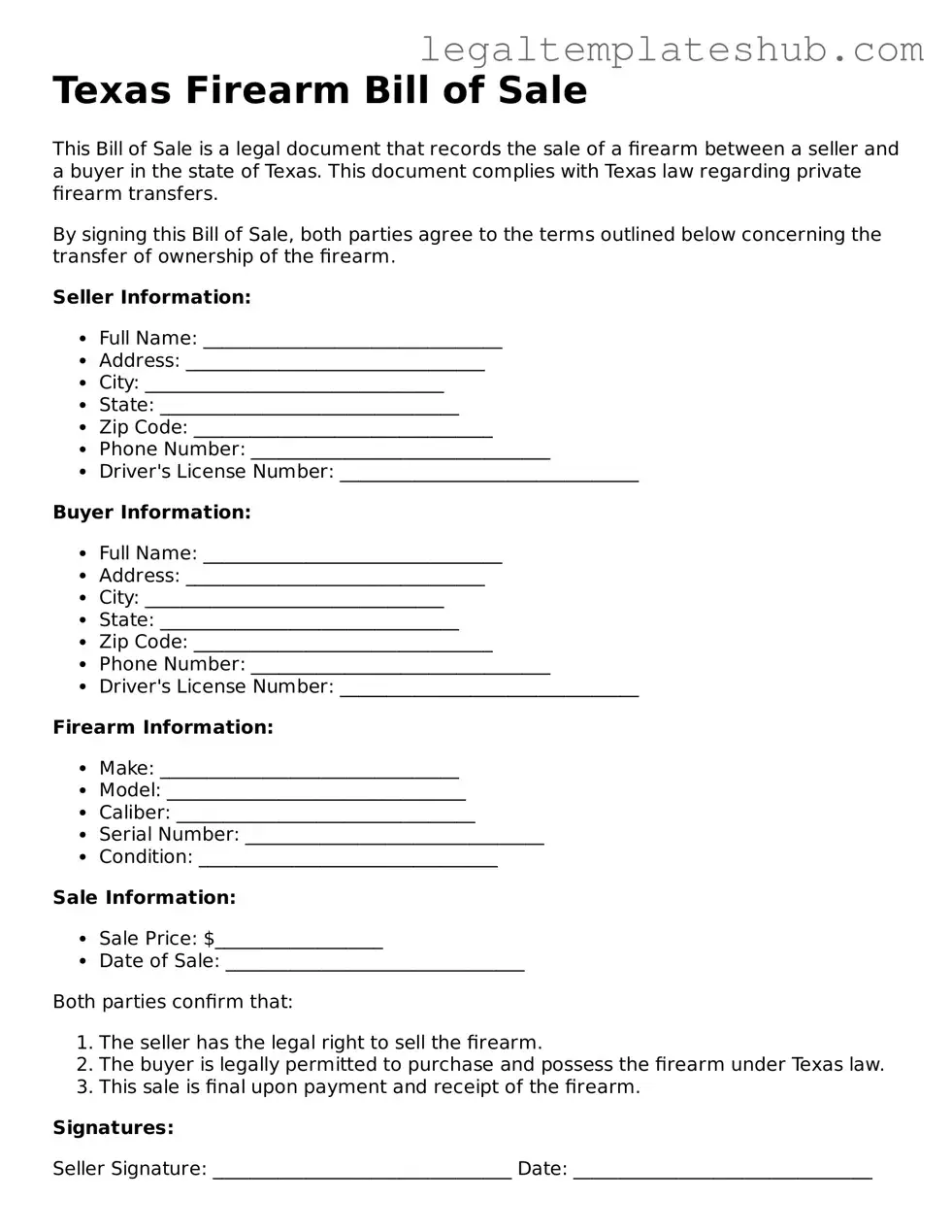Printable Firearm Bill of Sale Document for Texas
The Texas Firearm Bill of Sale form serves as a legal document that records the sale or transfer of firearms between individuals in Texas. This form protects both the buyer and the seller by providing essential details about the transaction, ensuring compliance with state laws. To facilitate a smooth transfer, consider filling out the form by clicking the button below.
Access Editor
